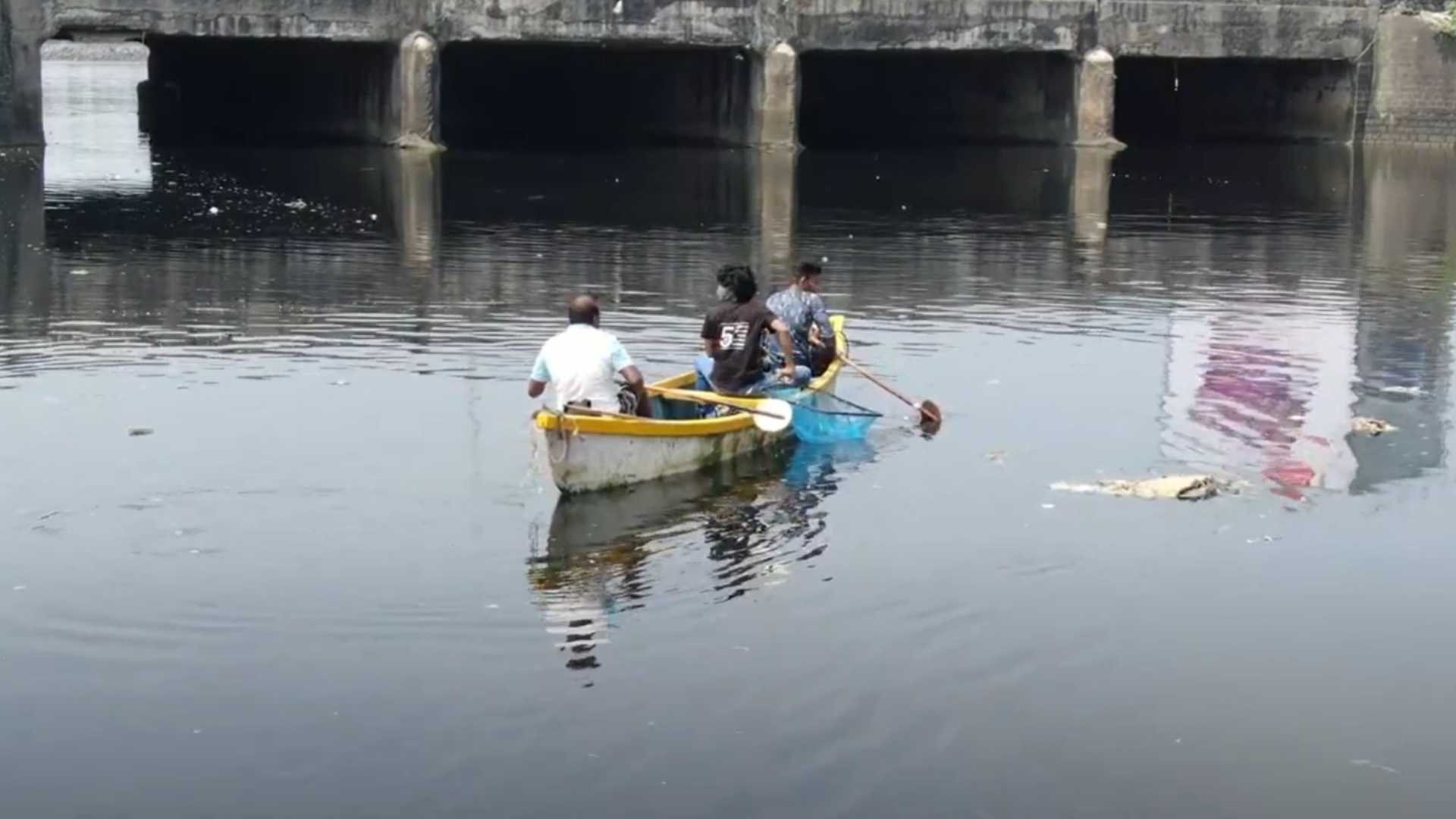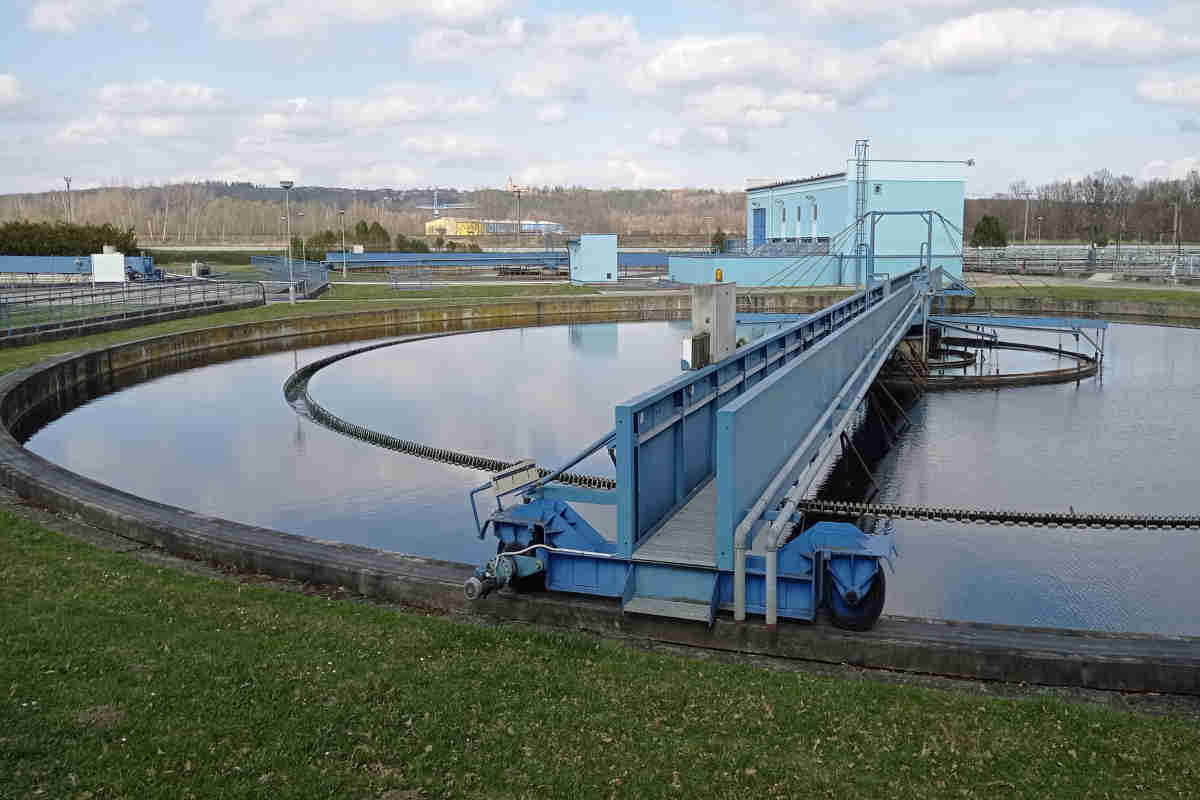Rivers, the lifelines of civilizations, are now among the most polluted ecosystems on Earth. Over 80% of global wastewater is discharged untreated into waterways, contaminating them with industrial chemicals, plastic waste, and sewage. This pollution devastates aquatic life—40% of freshwater species face extinction—and threatens human health, contributing to 1.7 million deaths annually from waterborne diseases.
Traditional cleanup efforts, often top-down and infrastructure-heavy, fail because they ignore local communities’ role, leading to unsustainable outcomes. For instance, India’s $3 billion Yamuna Action Plan saw limited success due to weak public participation and enforcement. Earth5R’s River Rejuvenation Framework flips this model by placing communities at the center.
Combining citizen science, behavioral change, and policy advocacy, it empowers locals to monitor pollution, adopt sustainable practices, and demand accountability. Pilot projects like Mumbai’s Mithi River cleanup show a 60% reduction in plastic waste through community-led waste segregation. By integrating grassroots action with scientific tools—from bioremediation to AI-powered water sensors—Earth5R offers a scalable blueprint for reviving rivers with people, not just for them.
The Science of River Pollution
Rivers are under siege from a toxic cocktail of pollutants, each with devastating consequences for ecosystems and human health. Understanding these contaminants—their sources, behavior, and long-term effects—is critical to designing effective restoration strategies.
Key Pollutants and Their Sources
Rivers worldwide face severe contamination from multiple pollution sources, each with distinct ecological and public health impacts. Industrial waste introduces toxic heavy metals like lead, mercury, and arsenic, along with synthetic chemicals such as PCBs and dyes, into waterways.
A 2022 study in Environmental Science & Technology revealed that 60% of industrial effluents in developing nations exceed safe limits, accumulating in river sediments and infiltrating the food chain. Meanwhile, untreated sewage and urban wastewater discharge pathogens, including E. coli and cholera, along with organic matter that depletes dissolved oxygen levels—a critical problem given that 2.4 billion people lack access to proper sanitation, as reported in the UN World Water Development Report (2023).
Agricultural runoff compounds the crisis, with fertilizers (nitrates, phosphates) and pesticides (glyphosate) triggering eutrophication and creating vast dead zones devoid of aquatic life. For instance, the Mississippi River Basin flushes 1.5 million metric tons of nitrogen annually into the Gulf of Mexico’s hypoxic zone, according to a 2021 study done by National Oceanic and Atmospheric Administration.
Adding to this, plastic pollution has reached alarming levels, with microplastics (≤5mm) now pervasive even in remote rivers. Research in the Journal of Hazardous Materials (2021) found the Ganges River alone releases 1.2 billion plastic fragments daily, which adsorb toxic chemicals like DDT, amplifying ecological risks as they bioaccumulate in aquatic organisms. Together, these pollutants form a complex, interconnected threat to freshwater ecosystems and human communities dependent on them.
Ecological Impacts
The degradation of river ecosystems manifests in three catastrophic ways: biodiversity collapse, eutrophication, and groundwater contamination. According to the Living Planet Report (2022), freshwater species populations have plummeted by 83% since 1970, a crisis driven by habitat destruction and chronic exposure to industrial and agricultural toxins.
Nutrient pollution compounds this disaster through eutrophication—excess nitrates and phosphates spawn toxic algal blooms that suffocate aquatic life by depleting oxygen and releasing lethal compounds like microcystins. The 2014 Lake Erie algal bloom, which contaminated drinking water for 500,000 people (EPA), stands as a stark example of this phenomenon.
Meanwhile, pollutants infiltrate deeper water reserves: in India, 70% of groundwater samples exceed WHO nitrate safety limits (CGWB, 2020), exposing millions to carcinogenic risks. Together, these interconnected crises reveal how river pollution cascades through entire ecosystems, from vanishing fish stocks to tainted drinking wells.
Human Health Risks
The contamination of rivers poses dire threats to human health through multiple pathways. Waterborne diseases like cholera, hepatitis A, and dysentery thrive in polluted waters, contributing to an estimated 485,000 diarrheal deaths annually according to the WHO.
Equally alarming is the process of bioaccumulation, where heavy metals such as mercury build up in fish and eventually in humans who consume them. A 2020 study published in Nature demonstrated this clearly, linking elevated mercury levels in Amazonian indigenous communities to gold mining operations along river basins, with severe neurological consequences.
Compounding these risks, climate change acts as a force multiplier for water pollution—rising temperatures reduce oxygen levels in water bodies, while extreme weather events like floods disperse contaminants across wider areas, as highlighted in the IPCC’s 2022 report. Together, these interconnected factors create a public health crisis that disproportionately affects vulnerable communities reliant on rivers for drinking water, food, and livelihoods.
Research Spotlight
Startling evidence from leading scientific bodies reveals the devastating scale of water pollution’s health and environmental consequences. According to joint research by WHO and UNEP, environmental pollution now accounts for 1 in 4 deaths worldwide, with contaminated water emerging as one of the primary contributing factors.
This crisis is set to intensify under climate change, as the IPCC’s 2022 report warns that rising global temperatures will further degrade water quality through two key mechanisms: more frequent extreme weather events that spread pollutants, and increased agricultural runoff from intensified rainfall patterns. These findings underscore the urgent need for integrated solutions that address both pollution control and climate adaptation to protect vulnerable water resources and public health.
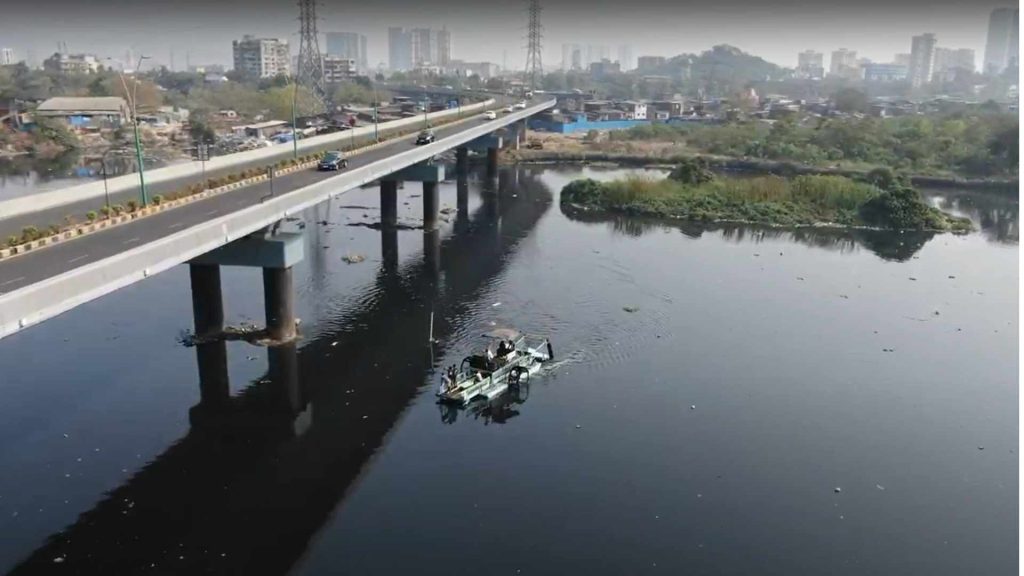
Earth5R’s Community-First Model: Empowering Change from the Ground Up
Rivers cannot be restored by policy mandates or technology alone—lasting change requires active community participation. Earth5R’s innovative River Rejuvenation Framework is built on three core pillars that transform local residents from passive observers to empowered custodians of their waterways.
Citizen Science: Democratizing Water Monitoring
Earth5R’s citizen science initiative transforms local residents into “water guardians” by training them to monitor key pollution indicators using affordable field tools. Community members track pH levels to detect chemical pollution, measure Biological Oxygen Demand (BOD) to assess organic waste contamination, and test Total Dissolved Solids (TDS) to identify heavy metal concentrations.
This approach proved highly effective in Mumbai’s Mithi River project, where residents using portable sensors identified industrial discharge zones with BOD levels eight times higher than Central Pollution Control Board safety standards. The community subsequently used this data to demand corrective action from polluting industries.
Scientific validation comes from a 2021 Nature Sustainability study demonstrating that such community-led monitoring increases compliance with environmental regulations by 40% compared to traditional top-down enforcement approaches, proving the power of grassroots water quality monitoring.
Behavioral Change: Tackling Pollution at Its Source
Through its transformative “River Care Workshops,” Earth5R drives meaningful behavioral change to protect waterways. These hands-on training sessions teach communities three critical practices: implementing waste segregation to prevent plastic pollution, composting organic matter to divert it from drains, and adopting the “River-Friendly Pledge” to eliminate harmful chemical detergents.
The impact has been measurable – in Delhi’s Yamuna River communities, participation in these workshops led to a 35% reduction in household waste entering drainage systems within just six months. This approach aligns with UNEP’s Plastic Waste Mitigation Guidelines (2022), which emphasize behavior change initiatives as key to pollution reduction.
These initiatives are recognized as among the most cost-effective and sustainable solutions for long-term river pollution control. By empowering communities with practical knowledge and alternative practices, Earth5R creates lasting environmental stewardship at the grassroots level.
Circular Economy: Waste as a Resource
Earth5R’s innovative circular economy model transforms environmental challenges into sustainable livelihood opportunities by converting river pollutants into valuable resources. The organization implements three key solutions to restore the Mithi River.
First, it partners with local farmers to repurpose nutrient-rich sediment into fertilizer. Second, it trains women’s collectives to upcycle recovered river plastics into commercial products like construction tiles. Finally, it deploys bio-remediation techniques using native water hyacinths to absorb heavy metals, later composting the biomass for sustainable waste management.
This approach has demonstrated remarkable success – a Chennai pilot project processes 2 tons of river sludge monthly into organic fertilizer, creating stable income streams for 50 families while cleaning waterways. The model’s effectiveness is evident in Chennai, where resident-collected IoT sensor data exposed illegal industrial discharges.
This led the Tamil Nadu Pollution Control Board to impose substantial fines on 12 violating factories. By aligning ecological restoration with economic empowerment, Earth5R creates sustainable incentives for long-term community participation in river conservation efforts.
Case Study: Mithi River Revival (Mumbai)
The Mithi River, once a thriving estuarine ecosystem, had degenerated into a heavily polluted sewage canal after decades of uncontrolled industrial dumping. Earth5R launched a multi-faceted community intervention to address the Mithi River crisis, beginning with training over 1,200 local residents in scientific water testing techniques and sustainable waste management practices.
The organization then conducted environmental audits of 15 riverside industries using pollution data collected by these empowered community members. Finally, Earth5R implemented circular economy solutions that successfully repurposed 30% of all collected plastic waste into usable construction materials, creating both environmental and economic benefits.
The results from 2020-2023 highlight the program’s remarkable effectiveness, including a 60% reduction in surface plastic waste and improved water quality, with dissolved oxygen levels rising from a toxic 2 mg/L to a healthier 5 mg/L. Additionally, the community’s data played a key role in strengthening the enforcement of Maharashtra’s 2023 Plastic Ban. This transformation showcases how empowered local communities, armed with scientific tools and sustainable solutions, can reverse even severe river degradation.
Why This Model Works
Earth5R’s river rejuvenation model achieves lasting impact through three key strengths that address common limitations of traditional approaches. First, its scalability comes from using affordable monitoring tools and developing local leadership, allowing easy adaptation to different communities.
Second, the model’s sustainability is ensured by creating economic value from waste – turning pollution into livelihood opportunities that maintain community motivation beyond initial cleanup phases. Most importantly, it successfully bridges science and social equity by combining rigorous water quality data with inclusive community participation, ensuring solutions are both scientifically valid and socially just.
This unique integration of scalable methods, economic sustainability, and participatory science creates a framework that delivers measurable ecological improvements while empowering marginalized riverside communities often excluded from environmental decision-making.
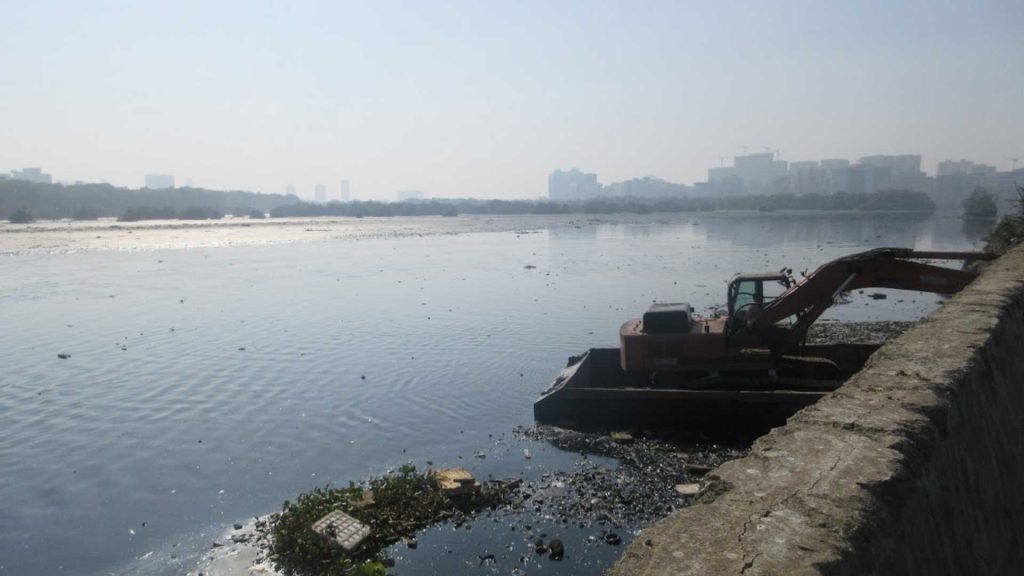
Global Parallels
Earth5R’s community-driven model aligns with proven river restoration approaches globally, demonstrating the universal effectiveness of participatory conservation. In the United States, the Charles River Conservancy achieved a 35% reduction in bacterial pollution through similar community water-quality monitoring programs.
In Bangladesh, Waterkeepers pioneered an innovative app-based reporting system that empowered over 5,000 citizens to document industrial violations in real-time. This grassroots monitoring system directly led to regulatory action against 50+ non-compliant factories, demonstrating the power of community oversight.
These international success stories validate the core principles of Earth5R’s approach across different geographical contexts. They prove how the combination of citizen science, digital tools, and community advocacy can effectively combat water pollution despite varying cultural and regulatory landscapes.
Scientific & Technological Interventions: Leveraging Innovation for River Restoration
Earth5R’s river rejuvenation framework integrates cutting-edge scientific solutions with scalable technologies to enhance the efficiency and impact of community-led efforts.
Bioremediation: Nature-Based Solutions
The approach employs phytoremediation using native hyperaccumulator plants like water hyacinth (Eichhornia crassipes), which absorbs heavy metals (lead, mercury) through its root system. Studies show it can remove 60–80% of contaminants from water within weeks (Journal of Environmental Management, 2022).
Earth5R complements this with microbial bioremediation—introducing pollutant-degrading bacteria (e.g., Pseudomonas spp.) to break down oil and organic waste. In Mumbai’s Dahisar River, this dual approach reduced hydrocarbon pollution by 45% in six months.
AI & IoT: Smart Monitoring Systems
Earth5R harnesses smart technology for real-time river monitoring through an innovative combination of IoT sensors and artificial intelligence. The organization deploys networks of low-cost IoT devices that continuously track critical water quality parameters including pH levels, turbidity, and dissolved oxygen content.
These sensors feed data into advanced AI analytics platforms, similar to IBM’s Green Horizons system, which analyze historical patterns to predict potential pollution spikes before they occur. This technological approach has proven particularly effective in the Yamuna River, where the sensor network successfully identified previously unknown points of untreated sewage inflow.
The real-time data enabled municipal authorities to respond to contamination events 30% faster than traditional monitoring methods allowed, demonstrating how technology can dramatically improve both the speed and precision of pollution intervention efforts.
Policy Integration: Data-Driven Advocacy
Earth5R bridges grassroots monitoring with formal governance by integrating community-collected data into regulatory processes. The organization’s scientifically validated citizen science data now contributes to official CPCB (Central Pollution Control Board) compliance reports, strengthening enforcement mechanisms with hyperlocal evidence. Earth5R’s data-driven approach empowers communities to co-develop policy briefs that influence environmental regulations.
This impact is evident in their contribution to Maharashtra’s landmark 2023 single-use plastic ban. The model’s effectiveness is evident in Chennai, where resident-collected IoT sensor data exposed illegal industrial discharges. This led the Tamil Nadu Pollution Control Board to impose substantial fines on 12 violating factories. This systematic linkage of community science with regulatory frameworks creates an unprecedented accountability loop, where citizen evidence translates into concrete policy actions and enforcement outcomes.
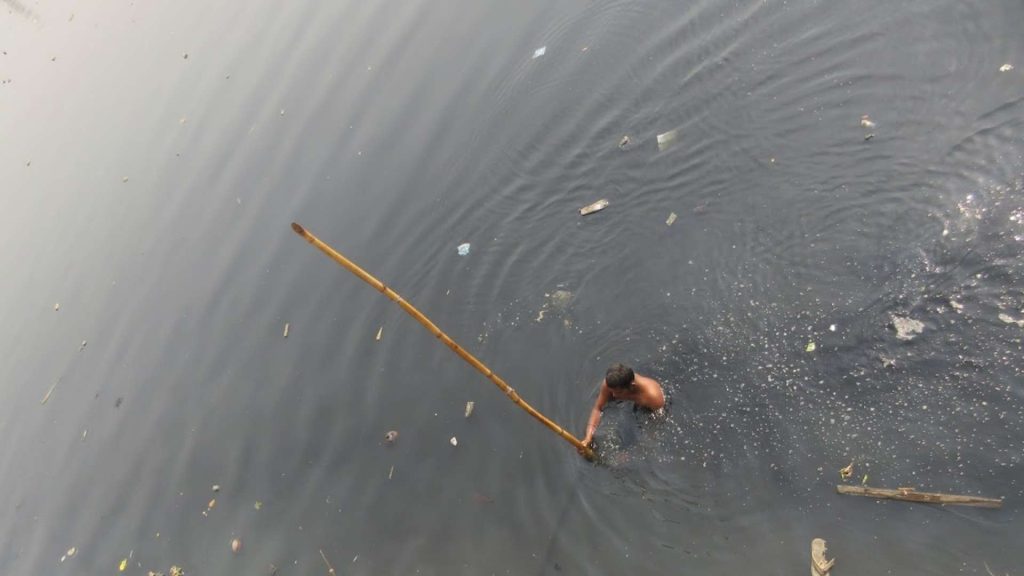
Challenges & Scalability: Navigating Barriers to Widespread Adoption
Despite its proven successes, scaling Earth5R’s community-first river rejuvenation model faces several challenges—though each barrier comes with actionable solutions.
Funding Gaps
A critical challenge facing river restoration initiatives like Earth5R’s is the persistent funding gap that undermines long-term sustainability. Most projects depend heavily on short-term grants and philanthropic funding, which often fail to provide the consistent financial support needed for ongoing maintenance and scaling.The Yamuna River project clearly exposed this funding limitation through its early struggles.
Repeated setbacks plagued efforts to establish permanent waste processing facilities due to inconsistent financial support. While pilot cleanups showed success, the initiative faced difficulties scaling to systemic solutions without reliable funding. This experience demonstrates how even effective models falter when lacking multi-year financing for infrastructure, technology, and sustained community engagement.
Bureaucratic Hurdles
Bureaucratic hurdles present significant obstacles to timely river restoration efforts, particularly for community-led initiatives. Lengthy approval processes often delay critical interventions – for instance, permits for bioremediation projects can take six months or more to secure in some Indian states, dramatically slowing implementation.
The river restoration effort faces compounded challenges due to fragmented oversight across multiple agencies. Key organizations like the Central Pollution Control Board (CPCB) and municipal bodies often work with conflicting mandates and poor coordination.
This disjointed governance structure breeds operational confusion, duplicates efforts, and wastes critical resources. Despite available technical solutions and strong community readiness, these systemic barriers delay urgent action on water pollution, leaving both ecosystems and local stakeholders vulnerable.
Industrial Resistance
Industrial resistance poses a significant challenge to river restoration efforts, as factories frequently lobby against stricter enforcement of environmental regulations and effluent standards. A telling example occurred in Pune, where local industries filed lawsuits against citizen groups after they publicly released damning pollution data, accusing them of “disrupting business operations.”
This case starkly reveals the fundamental conflict between corporate interests and environmental protection. Many industries continue prioritizing short-term profits over long-term ecological sustainability when facing regulation. Such resistance manifests through aggressive legal tactics against citizen groups, even those presenting irrefutable scientific evidence.
These counterattacks create daunting challenges for grassroots initiatives striving to enforce corporate accountability. The Pune incident underscores the need for stronger whistleblower protections and more robust regulatory frameworks to safeguard citizen scientists who expose industrial pollution.
Public-Private Partnerships (PPPs)
Public-Private Partnerships (PPPs) have emerged as a powerful solution to overcome funding and resource challenges in river restoration. Earth5R collaborates with CSR-funded corporations like Tata Projects through innovative adoption programs, where companies sponsor specific river stretches while local communities contribute labor and oversight.
This synergistic model combines corporate technical expertise and financial resources with grassroots energy and local knowledge. A standout success story comes from Nagpur, where one such partnership installed sponsored wastewater treatment units that reduced sewage inflow into local waterways by an impressive 40%. These PPPs demonstrate how aligning corporate social responsibility initiatives with community environmental goals can create scalable, sustainable solutions that benefit both ecosystems and participating businesses.
Digital Crowdfunding & Blockchain
Digital crowdfunding and blockchain technology are revolutionizing how river restoration projects secure funding and maintain transparency. Platforms like Milaap and GiveAsia enable communities to access global micro-donations, democratizing support for environmental causes beyond traditional grant systems.
Earth5R has innovated further with its “Adopt-a-Meter” campaign, which uses blockchain technology to track donations and sensor installations with complete transparency. Each contribution is recorded on an immutable ledger, allowing donors to see exactly how their funds are used to install and maintain water quality monitoring stations along polluted waterways.
This tech-driven approach not only expands funding sources but also builds trust through verifiable impact, creating a new paradigm for environmental philanthropy where every rupee’s journey from donor to riverbank is publicly accountable.
Policy Sandboxes
To overcome bureaucratic hurdles, Earth5R advocates for “policy sandboxes” – innovative regulatory spaces that allow experimental approaches to river restoration in controlled environments. These designated zones, like Gujarat’s pioneering “River Rejuvenation Districts,” create accelerated approval pathways for community-led projects while maintaining environmental safeguards.
By confining pilot programs to specific geographic areas, regulators can evaluate real-world impacts before scaling successful models. The sandbox approach dramatically reduces the typical 6-12 month permitting timeline to just 2-3 months for qualified initiatives, enabling faster implementation of bioremediation, citizen science monitoring, and other proven interventions.
This model balances necessary oversight with the urgency of ecological restoration, offering a template for reforming bureaucratic processes that often stifle grassroots environmental action.
Industrial Incentives
To transform industrial resistance into collaboration, Earth5R promotes incentive-based strategies that reward sustainable practices. The model advocates for certifying environmentally compliant factories with tangible benefits like tax breaks and prestigious “Green Branding” labels that enhance market reputation.
These incentives create powerful economic motivations for polluting industries to adopt cleaner technologies and meet effluent standards voluntarily. Early adopters in Maharashtra’s textile sector demonstrated 25% increased market access after receiving such certifications, proving that ecological responsibility can drive business value.
By aligning corporate financial interests with environmental outcomes, this approach reduces adversarial dynamics and fosters genuine partnerships between industries, communities, and regulators in river restoration efforts.
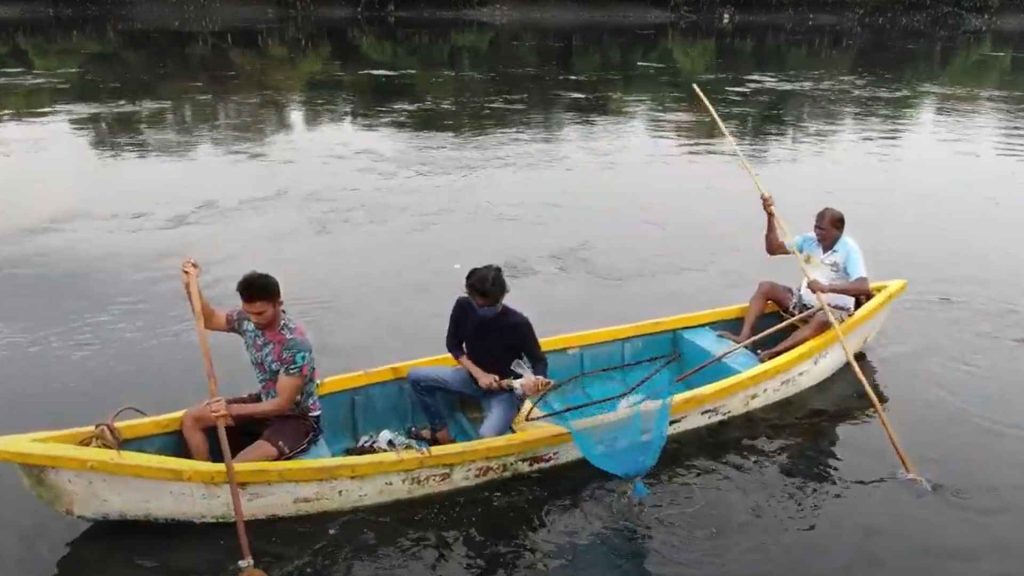
Empowering Communities, Restoring Rivers: A Sustainable Blueprint for Waterway Revival
Earth5R’s River Rejuvenation Framework presents a transformative, community-centric model for tackling the global water pollution crisis. By combining citizen science, behavioral change, and circular economy principles, the approach addresses both the symptoms and root causes of river degradation.
The measurable successes in Mumbai’s Mithi River and Delhi’s Yamuna—from 60% plastic waste reduction to revived aquatic ecosystems—demonstrate the model’s efficacy where traditional top-down methods have failed. The framework’s strength lies in its adaptive scalability.
Low-cost tools like IoT sensors and bioremediation make it replicable across geographies, while public-private partnerships and blockchain-based crowdfunding mitigate funding gaps. Case studies from India to Bangladesh prove that when communities are equipped with data and agency, they become powerful enforcers of corporate and policy accountability. However, systemic barriers persist.
Bureaucratic hurdles and industrial resistance—like Pune’s lawsuits against citizen scientists—reveal flaws in environmental governance. Three reforms can help: 1) Policy sandboxes to accelerate community project approvals; 2) Stronger whistleblower protections for pollution reporters; and 3) Green certifications to incentivize corporate compliance.
These changes would remove barriers to grassroots river restoration while aligning ecological and economic goals. The path forward requires multi-stakeholder collaboration. Governments must integrate community data into regulatory frameworks (as Maharashtra did with its plastic ban). Corporations should adopt river stretches through CSR initiatives, while citizens continue driving grassroots monitoring.
Earth5R’s model aligns with the UN’s Sustainable Development Goals (SDG 6) and offers a template for climate-resilient water management. As climate change intensifies pollution risks—from algal blooms to contaminant spread—this community-first approach provides a scalable, equitable solution. The time has come to shift from isolated cleanups to systemic regeneration, where every stakeholder becomes a river guardian.
FAQs on Earth5R’s River Rejuvenation Framework: A Community-First Approach to Restoring Polluted Waterways
What makes Earth5R’s approach different from traditional river cleanup methods?
Earth5R replaces top-down, infrastructure-heavy projects with community-led solutions combining citizen science, circular economy models, and policy advocacy for sustainable impact.
Which rivers has Earth5R successfully restored?
Key successes include Mithi River (Mumbai) with 60% plastic waste reduction and Yamuna (Delhi) where dissolved oxygen improved from 2 mg/L to 4.5 mg/L.
How does climate change worsen river pollution?
Rising temperatures reduce water oxygen levels, while floods spread contaminants (IPCC 2022). Earth5R’s model integrates climate adaptation through real-time monitoring.
How are local residents trained as “water guardians”?
They learn to test pH, BOD, TDS using low-cost tools and map pollution hotspots (e.g., Mithi River’s industrial discharge audits).
What behavioral changes does Earth5R promote?
Workshops teach waste segregation, composting, and avoiding chemical detergents, reducing Delhi’s drain waste by 35% in 6 months.
How are marginalized communities involved?
Women’s collectives upcycle plastic into tiles, while farmers repurpose sludge as fertilizer—creating livelihoods from cleanup.
What bioremediation techniques are used?
Water hyacinths absorb heavy metals (60–80% removal), while Pseudomonas bacteria break down oil (45% reduction in Dahisar River).
How do IoT sensors help?
They track pH, turbidity, dissolved oxygen in real time. In Yamuna, sensors cut sewage response time by 30%.
Is community data scientifically valid?
Yes—a Nature Sustainability (2021) study found it increases compliance by 40% vs. government monitoring alone.
How does Earth5R influence policy?
Citizen data strengthened Maharashtra’s 2023 plastic ban and led to fines for 12 Chennai factories via TNPCB.
What are “policy sandboxes”?
Special zones (e.g., Gujarat’s districts) where approvals for community projects are fast-tracked (2–3 months vs. 6+).
How are industries held accountable?
Through public audits, green certifications for compliant factories, and legal advocacy against violators.
What are the biggest barriers to scaling?
Funding gaps, bureaucratic delays (e.g., 6-month bioremediation permits), and industrial lawsuits (Pune case).
How is funding secured long-term?
Through PPP models (e.g., Tata Projects), blockchain crowdfunding, and converting waste into revenue streams.
Can this work globally?
Yes—similar models succeeded in USA (Charles River) and Bangladesh (Waterkeepers) with 50+ factory closures.
What measurable results has Earth5R achieved?
Earth5R’s initiatives have led to significant environmental and economic impacts. The Mithi River has seen a 60% reduction in plastic waste, improving water quality and ecosystem health. Additionally, waste upcycling efforts have created over 200 jobs, empowering local communities through sustainable livelihoods. In Nagpur, public-private partnerships (PPPs) have contributed to a 40% reduction in sewage pollution, showcasing the effectiveness of collaborative environmental management.
How is water quality improvement tracked?
Through dissolved oxygen levels, coliform counts, and pollutant concentrations pre-/post-intervention.
Does this approach protect public health?
Yes—reducing waterborne diseases (cholera/hepatitis) and heavy metal bioaccumulation (e.g., mercury in fish).
How can I support Earth5R’s work?
You can take action to support cleaner water systems in multiple ways. Volunteer as a Water Guardian to help monitor and protect local water bodies. Contribute to the installation of water quality sensors, enabling data-driven solutions for pollution control. Additionally, advocate for policy reforms in your region to strengthen environmental regulations and promote sustainable water management practices
Are there corporate partnership opportunities?
Yes! Companies can adopt river stretches, sponsor clean-tech, or fund circular economy startups.
Join the River Revolution: Your Action Can Heal Our Waters
The time for action is now. Our rivers—the lifelines of ecosystems and communities—cannot wait for slow-moving bureaucracies or half-hearted reforms. Earth5R’s proven model shows that change is possible when citizens, governments, and industries unite behind science-backed, community-driven solutions. You can be part of this movement.
Join local water monitoring initiatives, demand policy reforms from elected officials, and support businesses that adopt sustainable practices. If you’re a corporate leader, invest in circular economy solutions and adopt river stretches through CSR programs. Educators and researchers can amplify citizen science by training the next generation of water guardians.
Together, we must pressure policymakers to implement whistleblower protections, create regulatory sandboxes for innovation, and reward green industrial practices. The tools exist, the blueprint is clear, and the consequences of inaction are unthinkable—vanishing biodiversity, waterborne diseases, and ecological collapse.
Visit Earth5R.org to volunteer, donate, or launch a river revival project in your area. Remember: no single actor can solve this crisis, but every individual, community, and institution has a role to play in rewriting the future of our waterways.
~Authored by Ameya Satam

